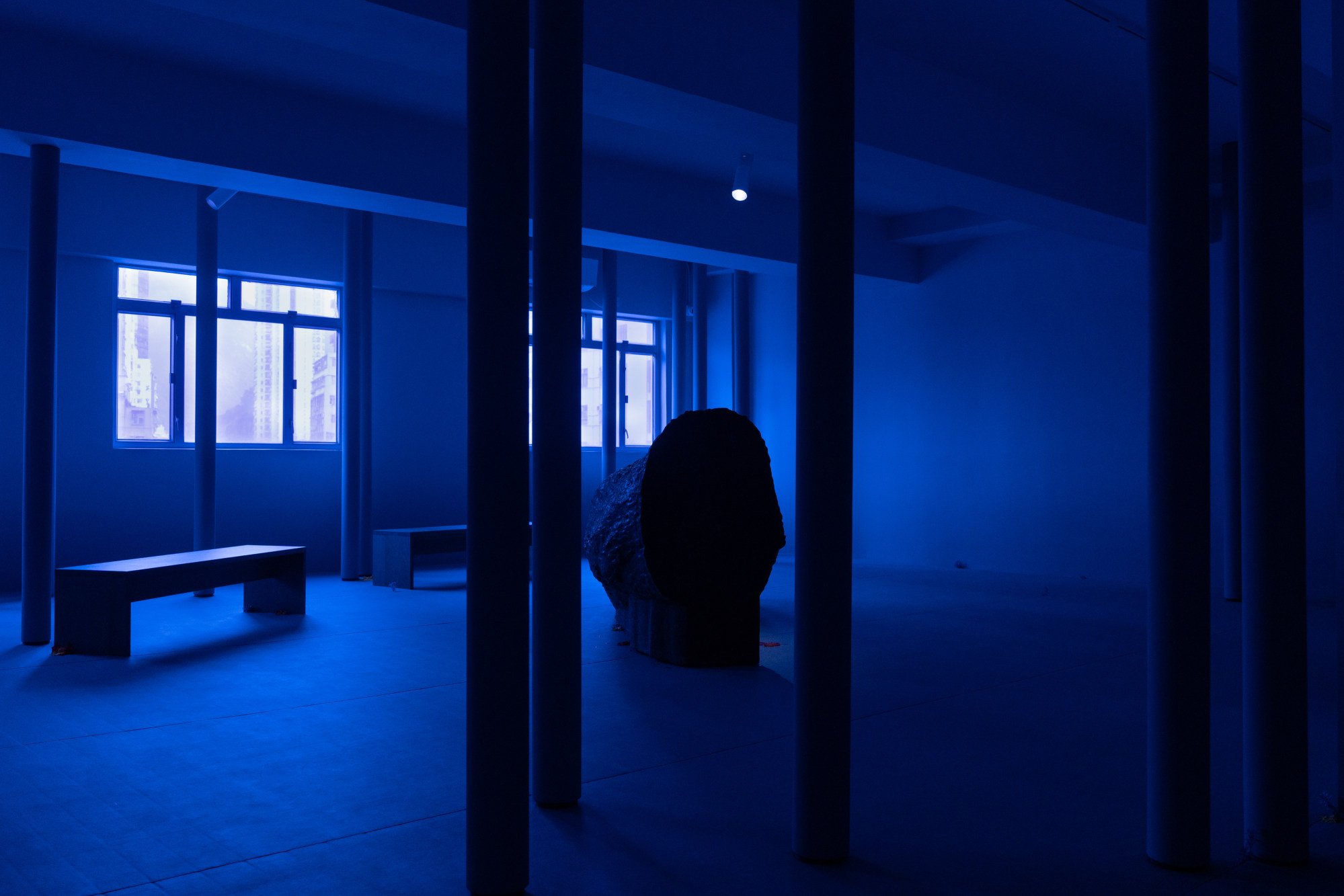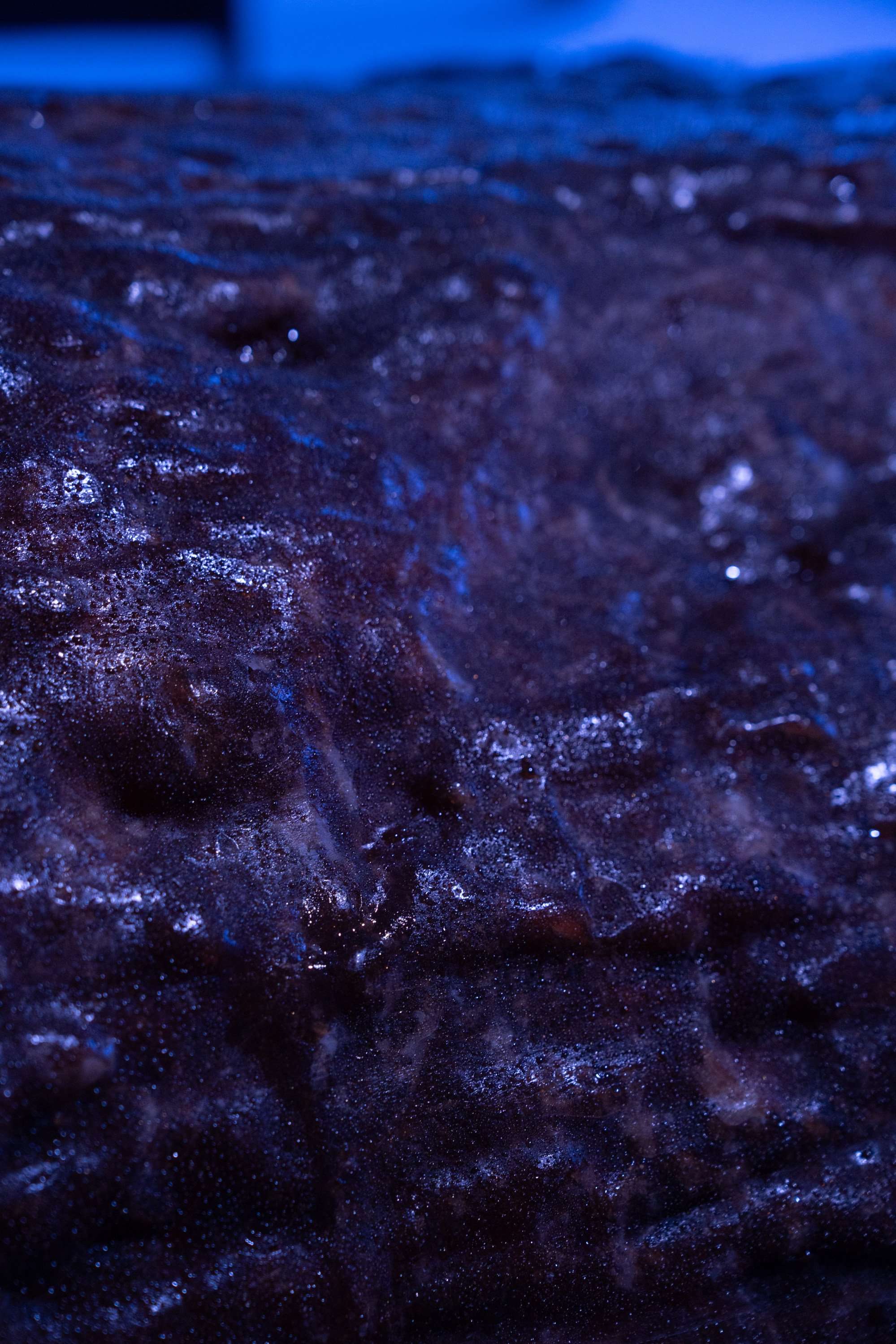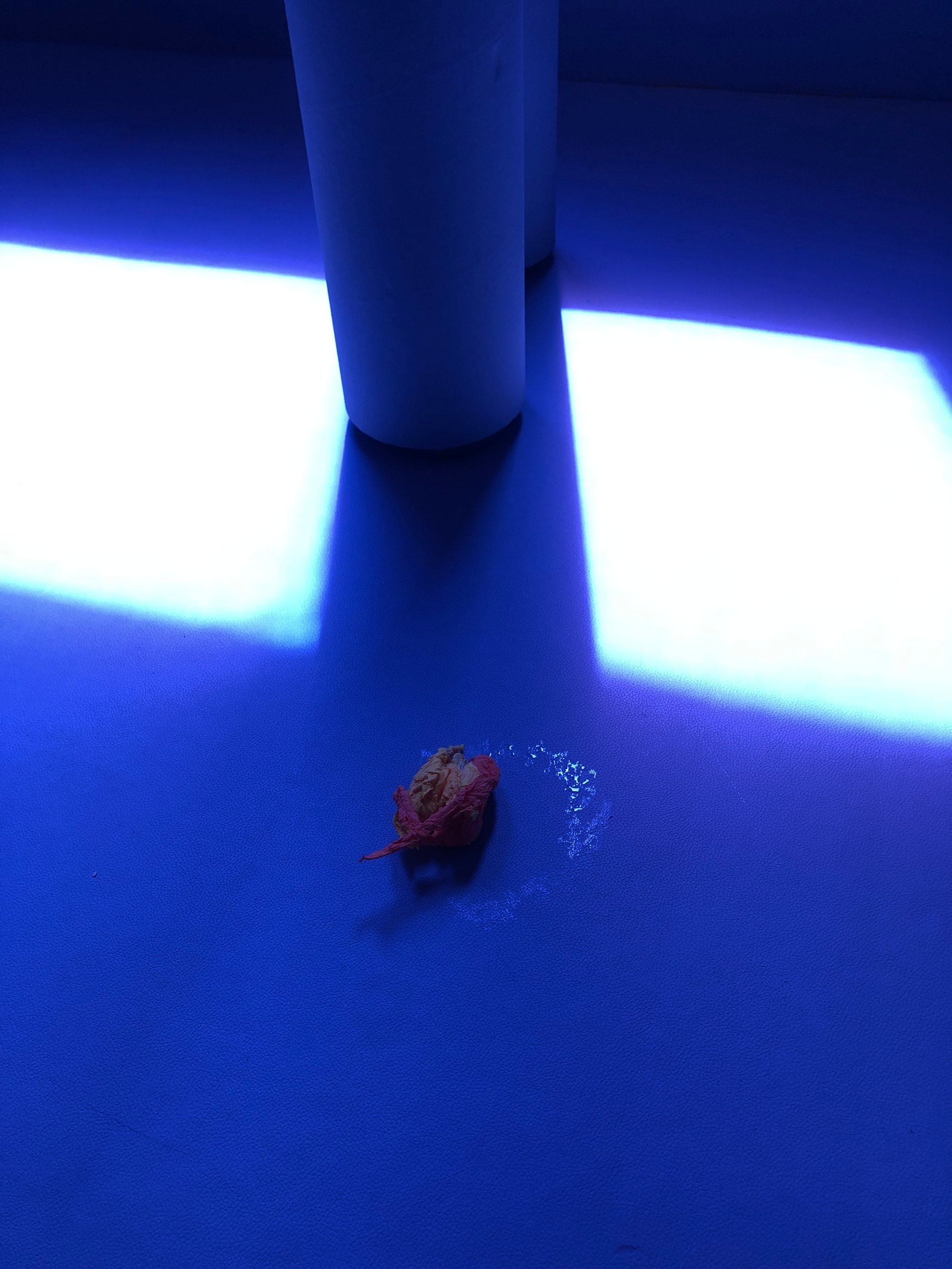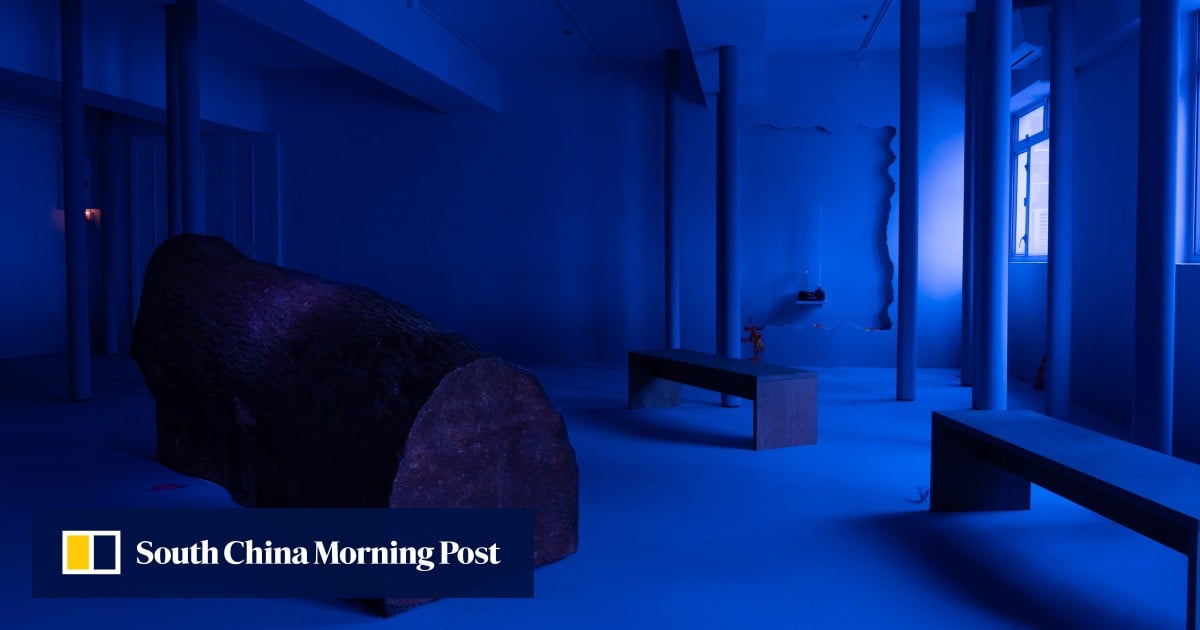(The pandemic gave him the chance to experiment with actually making art inside an artificial, doubly closed system – quarantine hotels and an isolated Hong Kong.)

But now, with “Soft Breath”, he has turned his gaze outward, studying historic rituals that different communities have established to overcome loneliness, fear and self-doubts, and the result is spellbinding.
Hong Kong artist creates his work with plants, not paints
Hong Kong artist creates his work with plants, not paints
There are shrivelled clumps of orange and yellow tissue scattered on the floor, reminiscent of a variety of activities, from post-hookup clean-ups to the oranges that believers toss up to the wishing tree. A woody, musky scent is in the air. There is a diffuser on one side of the room, also surrounded by clumps of tissue. We are told that what we smell may also come from behind two closed cupboard doors: a pile of sweat-soaked, pheromone-rich T-shirts.
I had gone there to escape the throngs that descended on Para Site’s main floor for an Art Basel event on March 28. For a short while, there was just me and another person sitting on the other side of the log. In the hushed atmosphere, I could have been in that clearing in Hampstead Heath, checking out a stranger.
The log is not real. Yeung made a replica, using scented soap, of a section of the famous “F*** Tree” in Hampstead Heath – an ancient oak that might have developed its curved contour owing to the number of bodies that have been pressed against it since the 19th century.

He made his first “F*** Tree” in London in 2023 for “Soft Ground”, an earlier iteration of the exhibition at Gasworks, which co-commissioned the tree with Para Site and Aranya Art Centre in mainland China.
It is in this Hong Kong show that the discarded orange tissues have appeared to make the link with the wishing tree. What can these two trees possibly have in common?
Why Hong Kong remains Asia’s leading arts hub despite tough Covid curbs
Why Hong Kong remains Asia’s leading arts hub despite tough Covid curbs
With both trees, we loved them, we turned them into vessels of our own desires, and then we abused them – which just about sums up humanity’s relationship with nature.
But Yeung’s practice is never just about being respectful of nature. His strategy of queering normative distinctions can be seen in how he highlights the blurred line between natural and artificial: after all, the many who still queue in Lam Tsuen at Lunar New Year believe that the tree god has successfully attached itself to a new plastic home.
By melding the trees together, he raises the question of moral hierarchy. A Google search suggests both traditions started in the 1800s. One represents a self-abandonment to divine providence, the other, the self-abandonment to the pleasuring of and being pleasured by a stranger.

Yeung’s choice of soap as the material for the “F*** Tree” replica suggests that cruising can be cleansing. (Coincidentally, Louise Giovanelli’s exhibition that is now on at White Cube Hong Kong also explores that liminal space between sexual and spiritual ecstasy.)
Will the most important exhibition of his career – representing Hong Kong during the world’s most important contemporary art event in Venice – measure up to the convincing immersive experience of “Soft Breath”? Stay tuned.
“Trevor Yeung: Soft Breath”, Para Site annex, 10B, Wing Wah Industrial Building, 677 King’s Road, Quarry Bay, Wed-Sun, 12-7pm. Until May 26.

